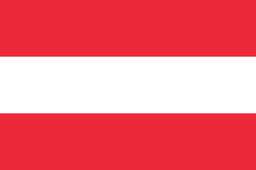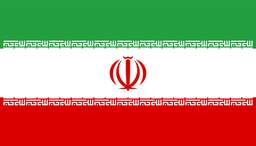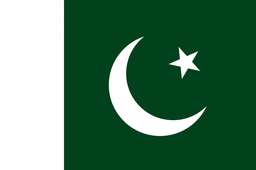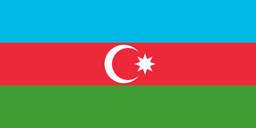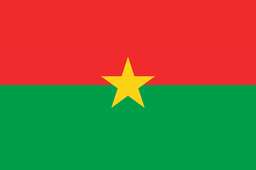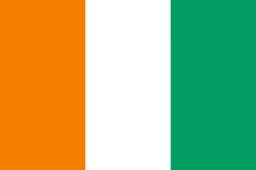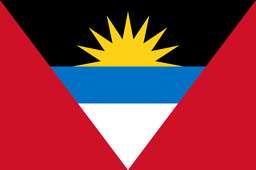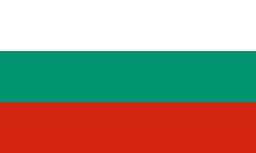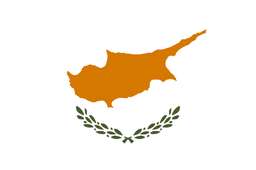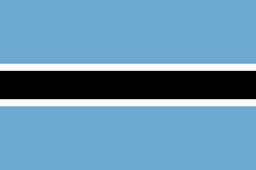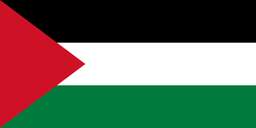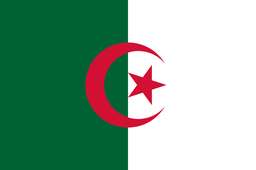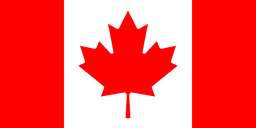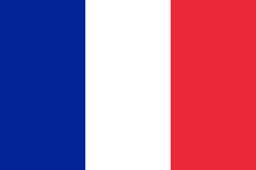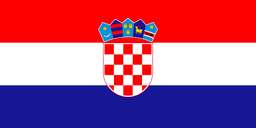Given evidence of human life spanning thousands of years, the history of the Central African Republic starts in antiquity. Many different ethnic groups and kingdoms have occupied the territory now known as the Central African Republic over its long existence.
Early Civilizations
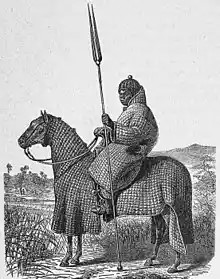
Among the first in the area, the Sao civilisation rose from around 500 BC to 1500 AD. They were great ironworkers and had a sophisticated political and social structure. Still, droughts and invasions from surrounding empires brought about the collapse of their society. Among other powerful kingdoms, the Baguirmi Kingdom, which traded slaves and controlled trade routes, and the Kanem-Bornu Empire emerged in the 16th century.
Colonisation by European Powers
Late 19th-century European colonial agents began drawing interest in the Central African Republic. The area became known as Ubangi-Shari, and the French asserted authority over it in 1894. It came under French Equatorial Africa in 1910. At this time, the country's resources were exploited, and forced labour was pervasive. Also engaged in the World War I fighting of the French army were many Africans.
The Bokassa Region
Following a military coup in 1966 and his declaration of lifetime presidency, Jean-Bédel Bokassa called the country the Central African Empire in 1976. He led until his overthrow in 1979 under a coup orchestrated by France. Bokassa was corrupt, abused human rights, and lavishly spent money on his family and himself during his term. His expulsion started a political upheaval and a killing spree across the country.
Etymology
Rebranded formally as the Central African Republic in 1957, the nation adopted the name to highlight its central African geography and set itself apart from other nations sharing the same name. The Central African Republic fights political unrest, financial challenges, and resource conflicts. Still, projects for peacebuilding and national reconciliation are in progress to help this beautiful country with a rich past develop a better future.
16th and 19th centuries
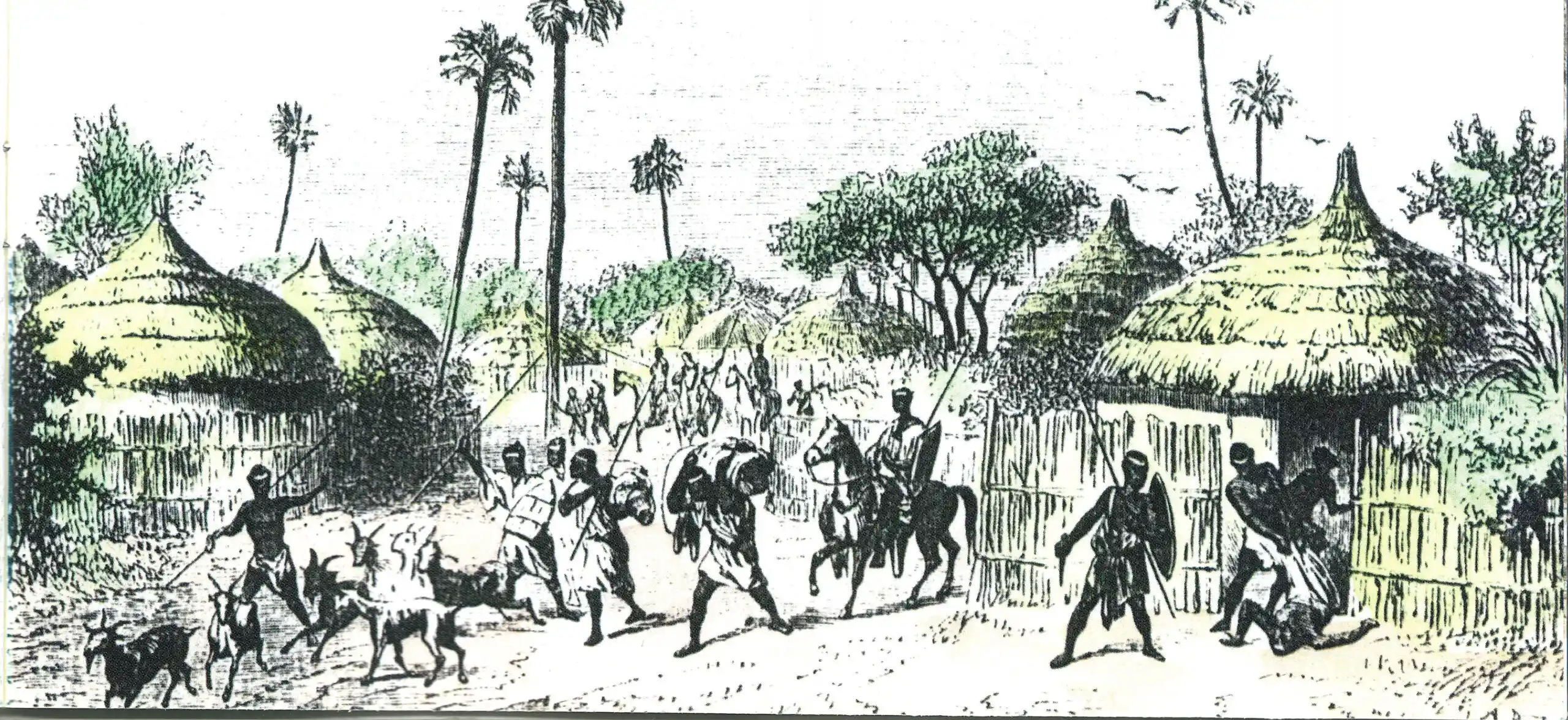
People named the area that would finally become the Central African Republic home thousands of years ago. Based on data from at least 10,000 BC, some scientists think early people evolved here. Throughout history, several different ethnic groups and civilisations have controlled the region. Sixteenth-century powerful kingdoms like Kanem-Bornu and Baguirmi dominated trade routes and engaged in slave trading.
In the era of French colonialism
Tensions between the colonial government and the local population emerged in the 1920s and 1930s. There were several revolutions opposing forced labour, too high taxes, and other repressive policies. Notwithstanding this opposition, France continued to take advantage of its resources for its own profit. Still, the 1950s saw the beginning of development projects with the construction of schools and hospitals.
Independence
August 13, 1960, saw the Central African Republic totally independent of France. Early on, nevertheless, the nation did have major difficulties as an independent entity. Political unrest, economic upheaval, and resource wars are just a few of the still-present difficulties the Central African Republic faces. Still, initiatives for national reconciliation and peace-building are on their way to create a better future for this stunning nation with a great legacy.
Bokassa and the Central African Empire (1965–1979)
After a military seizure in 1965, Bokassa declared himself president for life. David Dacko was expelled. Declared emperor in 1976, he turned his country into the Central African Empire. But his rule was beset with corruption, violations of human rights, and showy personal and family spending. This caused mounting public unhappiness and, at last, a coup supported by France in 1979, which ousted Bokassa from office.
Republic of Kolingba in Central Africa
After Bokassa's defeat, General André Kolingba came to govern the country. Under his autocratic reign marked by breaches of human rights, he ruled for ten years. The popular uprising against Kolingba's government started in 1991. This produced the basis of a transitional government and, at last, democratic elections in 1993.
The Patassé government (1993-2003)
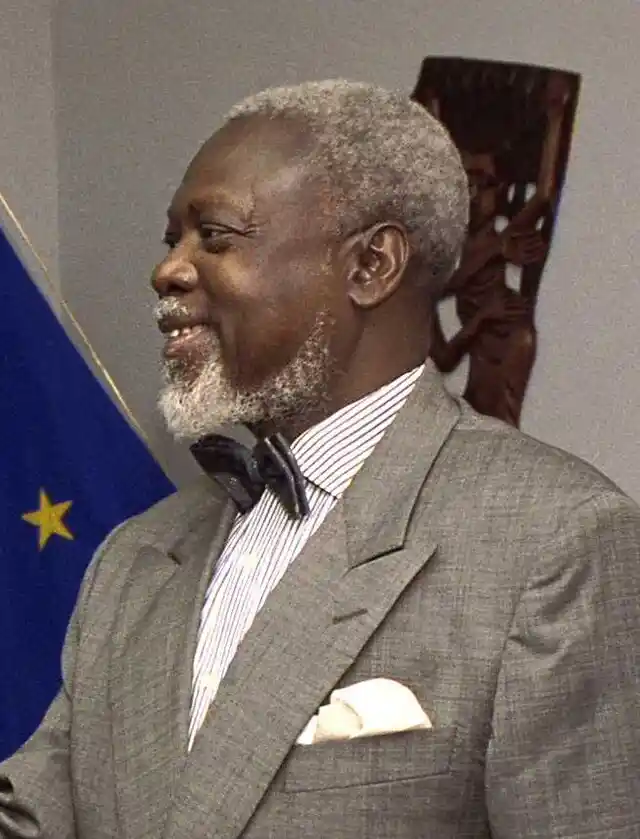
In spite of this, obstacles, including claims of corruption and actions taken by militants, hindered his leadership. Patassé was removed from his post in 2003 due to the coup d'état in which General François Bozizé was executed. This episode signalled the start of the next chapter in the history of the Central African Republic.
Bozizé and conflict (2003–2013)
Political opponents' continuous conflict amongst rebel groups marked Bozizé's rule. Major human displacement and thousands of deaths from these conflicts turned into a full-scale civil war spanning 2012 to 2013. Taken out in a coup in 2013, Bozizé's absence has brought ongoing unrest in the nation. Still, projects toward peacebuilding and national reconciliation are on the way to help the Central African Republic establish a better future.
Civilizations Wars
The Republic of Central Africa has suffered several civil conflicts since gaining its independence. These wars have been spurred by political and ethnic differences, resource-based rivalry, and foreign forces.
Recently, violence between armed groups vying for control of natural resources has exploded all throughout the country. From this follows widespread violations of human rights and people's relocation.
Geography
Bound by Chad, Sudan, South Sudan, the Democratic Republic of Congo, Cameroon, and the Republic of Congo, the landlocked nation of the Central African Republic is exactly midway across Africa. Its diversified topography— Mountains, forests, and savannas—is well known.
Culture and Traditions
Living in the Central African Republic are over eighty different ethnic groups, each with unique customs and way of life. Often featuring traditional instruments like drums and mbira, music and dance are basic elements of national culture. The nation boasts a rich gastronomic legacy as well; most meals call for rice, plantains, and cassava, staple foods. Apart from Christianity and Islam brought during colonial times, many groups still retain old values and rituals.
Climate
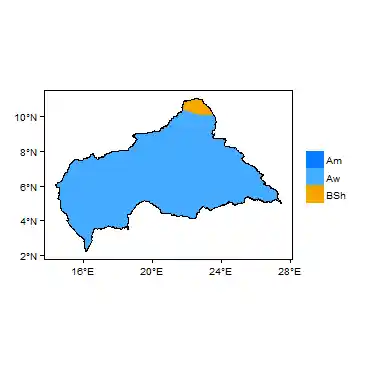
The Central African Republic's tropical environment boasts high temperatures and year-round very notable rainfall. The country's north goes through a dry season from October to May; the south boasts a long wet season running from March to November. But lately, all throughout the nation, erratic and strong storms driven by temperature changes have devastated crops and livelihoods.
Economy
Still among the poorest countries on Earth, the Central African Republic possesses a lot of natural resources, including diamonds, gold, and lumber. Years of unrest and conflict have impeded economic growth. While most people live on subsistence farming, displacement and ongoing violence have rocked this way of life. The government is strengthening the economy with infrastructure, mining, and agricultural development.
Biodiversity
Many threatened species, as well as a great variety of flora and fauna, call the Central African Republic home. While initiatives at conservation seek to protect these valuable resources, continuous conflict and poaching present huge challenges.
Politics and Government
The prime minister is the Head of Government of the Semi-presidential Republic of Central Africa; the president is the Head of State. Though the nation boasts a multi-party system, continuous bloodshed and corruption have undermined political stability. Efforts for democracy and good government are in progress with constitutional revisions and global backing. Still, constant warfare and instability have hindered these projects.
Executive branch
Selected for a five-year term, the president oversees the government's executive branch. Originally selected in 2016 and re-elected in 2021, Faustin-Archange Touadéra is the president currently in office. The president picks cabinet members and a prime minister to assist in governing the country. Comprising lawmaking and government action monitoring, the National Assembly also forms part of the executive branch.
Legislative Branch
Selected under a mixed system combining direct and indirect voting, the National Assembly consists of 140 members. Having five-year terms, members are in charge of passing legislation and monitoring government activities.
Judicial Branch
Comprising subordinate courts, a Constitutional Court, and a Supreme Court, the government's judicial branch is, although corruption and conflict have gravely degraded the Central African Republic's judicial system, initiatives aiming at increasing its independence and efficiency are underway.
Administrative divisions
Comprising sixteen administrative prefectures, each headed by a prefect selected by the president, the Central African Republic is Sub-prefectures, communes, and villages divide these divisions more.
Foreign relations
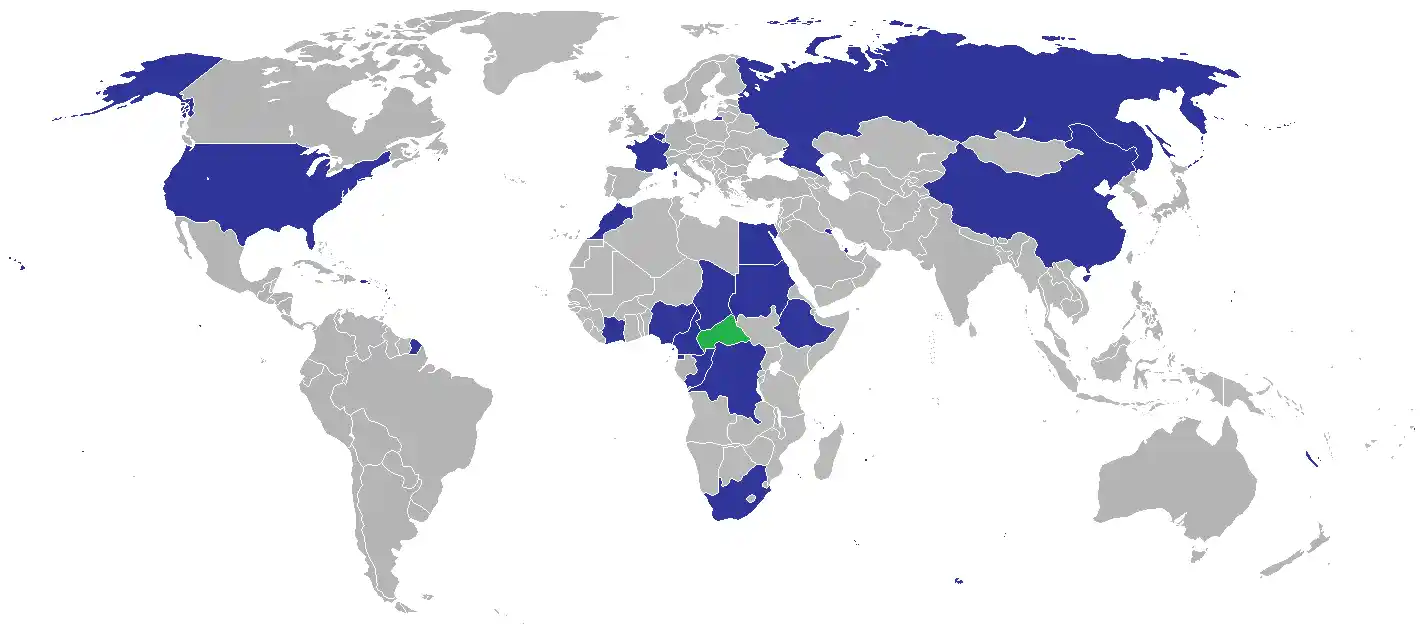
Maintaining diplomatic connections with foreign nations, the Republic of Central Africa is a member of the World Bank, the African Union, and the United Nations, among other international organisations. For humanitarian aid as much as for economic growth, the nation needs outside help. Efforts meant to strengthen regional stability and solve cross-border problems serve to improve relations with adjacent nations.
Human Rights
Regardless of constitutional protections, political unrest and violence have resulted in continuous infringement of human rights in the Central African Republic. Though more has to be done to protect the rights of its people, the government has started to solve these issues.
Transportation
The Central African Republic has few paved highways, and most of its roads are in poor condition; hence, limited mobility results. The country largely depends on air transportation for commodities as well as people, considering its challenging landscape. Plans also aim for improvements to the railway system to increase trade and connections both generally and locally.
Energy
Just over 10% of the Central African Republic's population consistently have access to power; most lack any at all. Although inadequate resources and infrastructure have limited growth, the country has significant unrealised potential for hydroelectric power and renewable energy sources.
Education
Particularly in distant places where war usually results in destruction or inaccessibility to schools, the Central African Republic lacks sufficient access to education. At about 37%, the literacy rate is poor; male and female enrollment rates differ drastically. Efforts toward better access to high-quality education are being made by means of infrastructure enhancements and international organisation alliances.
Healthcare
The poor healthcare system of the Central African Republic lacks easily available medical facilities and trained medical staff. The system has been badly stretched by the ongoing conflict, and a lot of unnecessary deaths have resulted. Though more is needed to satisfy the national healthcare demands, efforts are being directed at improving infrastructure and services.
Demographics
Comprising more than 80% of its population living in rural areas, the Central African Republic counts roughly 5 million citizens. The country has about eighty different ethnic groups and languages spoken there. Most individuals identify as Christian; Muslims and indigenous religions follow.
Languages
Spoken in more than eighty languages, the Central African Republic features a diverse linguistic environment. Still, French is the official language and is used somewhat extensively in government and education. Spoken as a lingua franca, Sango is a Creole language derived from the Ngbandi and Ngbaka languages.
Religion
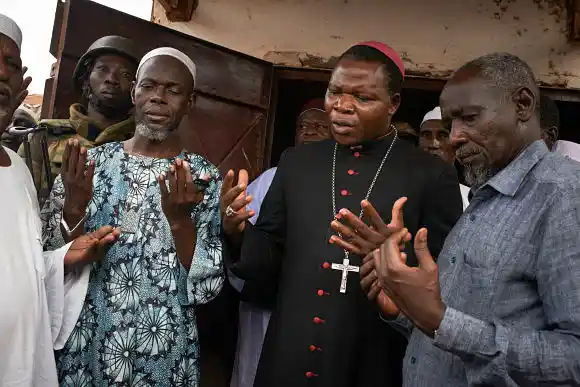
Christianity is the most often used religion among the inhabitants of the Central African Republic since almost eighty percent of them identify as either Roman Catholic or Protestant. Particularly in rural communities, indigenous religions and Islam are rather popular.
Sports
Football (soccer) is the most popular sport in the Central African Republic since the national team is playing internationally. Common sports are basketball and rugby as well.




